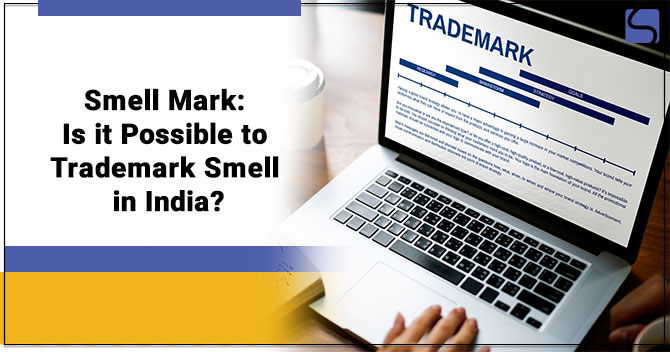What is a Collective Mark? – A Complete Guide

Karan Singh | Updated: Jun 29, 2021 | Category: Trademark
A Collective Mark presents as a useful collective or service mark to be used by a group or association, for business which tells their connection with the brand. It’s a Trademark that is used for distinguishing products or services of a company or an organisation that is not within the scale of the Indian Partnership Act, 1932. Collective Marks are vital to fulfilling all the industrial specifications & compliance standards for it to be eligible to be used. It also aids in representing the quality of goods or services. The primary object of a collective mark is that it differentiates the features of the products/services provided by a business or a company, or a brand. Scroll down to check more information regarding Collective Mark.
Table of Contents
What are the Advantages of a Collective Mark?
Following are some significant advantages of a Collective Mark:

- Distinctive Products: Regarding competition, a good Service Trademark Registration can aid in making a service distinct and further aid in its advertisement as well. The Trademark will signify the quality or idea of the brand and, in turn, help unite the business with it.
- Product Symbol: An incorporated Trademark can use the symbol on its logo to communicate that it’s part of a registered Trademark & no one can use any of its symbols. It is comprehensive of its various uses, just as rights. If anyone, copy the design, logo, name, or symbol, then that individual can be sued by the business.
- Ten Years of Validity: Registered Trademark is valid for ten years, and it can be renewed after ten years. It’s cost-effective and enables the business to maintain & create a distinctive identity.
- Attract Leading Personalities: An excellent brand will aid in attracting leading celebrities or talented peoples as a brand ambassador. Such peoples will further increase the business and brand image. The benefits of Trademark Registration are more than the invested amount in incorporating. Its appreciation may not be determined in financial terms at the current moment, yet the market turnout provided by the enrolled Trademark assumes a significant role in the development of business. Hence, make a Trademark Registration application on most of the mark before another individual registers it.
- Exclusive Trademark Rights: When it comes to collective Trademark Registration, the owner of the business protects the sole rights over the Trademark use. For this grounds, the owner had the right to use the collective mark for all the products produced by their business or services provided, submitted in the application of Trademark, which prevents others from using it. In case it’s used, the proprietor has the privilege to indict anyone who does.
- Builds Goodwill and Reputation: A Trademark on the product aids build the reputation & goodwill of a brand. This will help clients to recognise products accordingly and form a trust. Therefore, enabling a loyal set of consumers who will always select products belonging to one specific brand for regular use.
- Recognises Value: Another advantage of trademarking a product is that it aids in attaching identity to the value furnished by the product. This way, the brand also becomes part of that distinctiveness, prompting clients to associate similar value & draw in new clients. They will be able to differentiate the product’s quality by its Trademark.
Necessities for Registration of Collective Marks in India
- Name of the Website: It also aids to protect Trademarked business names as the name of the website as well. But, Domain Name Registration of a website and Trademark Registration is not implemented by similar legal bodies. For example, if the name of a business is in use as a domain by another company, the business may approach it for acquire. If the name of the domain was registered before Trademark, the business wouldn’t be able to sue them either.
- Explain Business Offers: Concerning business, Trademarks must identify what it offers. A Collective Mark will signify the business sells physical product Brand Registration must show the particular collective mark and be able to explain what the company offers.
- Recognise Trademark Class: During Trademark Registration, it is essential to know the different classes in the Registry of Trademark. In total, there are around 45 sectors and each sector is named as a class. Goods & Services are categorised into 45 different classes by the Registry. The Trademark offers you the right to sell under a specific brand name within a particular sector in the economy.
- Legal Help: It’s always good to hire a legal expert when it comes to the doubt of how to Trademark product. The reason being, there are many legal mistakes or problems one can make if that individual is not knowledgeable regarding the process of Trademark.
- Basis of Use: When it comes to solving how to Trademark a product’s name, it is essential to signify whether the Trademark that is being incorporated is for “intent to use” or “use in commerce”. It is on the foundation of this that the application status will differ. Collective marks not in use or not used for commercial intentions will be filed under “use in commerce”. Collective Trademark Registration that is already in use will have to prove in the images form of a collective mark in use or promotions or labels concerning your product offerings.
What are the Vital Documents Required for Collective Trademark Registration in India?
For the Registration of a Collective mark, the following vital documents are required:
- If the applicant is an individual, then documents supporting the name of the individual, address and nationality have to be furnished. If the applicant is a company, documents supporting the state or nation of Registration with the full address. If it’s a partnership, then documents supporting all partners.
- The products’ list requires Registration of the Trademark.
- Submit a copy of the Trademark to be registered.
- State if the applicant is a partnership, company or an individual.
- In the case of an application of Trademark was filed earlier in another nation, then it can be used to apply here in India by furnishing details like (filing date, goods or services, application number, and country). For this, a certified document or a notarised copy of the same has to be submitted with the Trademarks Office within two months of the Trademark application filing; if not in the English language, a notarised[1] English translation is required.
- A certified document is signed by the certified signatory or the candidate with the name and designation described on it.
- If the Trademark has already been in use, then proof of the same has to be furnished with the date. An affidavit testifying to its use has to be filed with the Trademark application. The word “use” can vary from showing in advertisements, letterheads, marks on invoices, etc.
Procedure for Collective Trademark Registration

Step 1: Trademark Search: Even with a unique mark, word, or logo in mind, it aids to perform a Trademark Search to ensure that the name is not taken. Implementing a detailed Trademark Search aids in establishing where a Trademark or brand stands, its popularity.
Step 2: Filing of Trademark Application: Once you have to make sure that the brand name or logo selected by you is not in the Registry, you can go further and file a Trademark application from any of the Office of Trademark located in Delhi, Mumbai, Kolkata, or Chennai, or online on the website of the Trademark Registry. A receipt is issued for future references. The Trademark application status can be checked online.
Step 3: Examination of Trademark Application: Once you filed the Trademark application, it is examined by the Trademark examiner for inconsistencies which can take anywhere between 12 to 18 months. Only upon unconditional acceptance of the Trademark examiner does the Trademark gets published in the Journal. If the examiner finds any objections or conditions required before the publication, the examiner will mention conditions/objections in the examination report. The candidate will be given one month of time to fulfil these conditions or reply to objections. After which, the Trademark is published in the Journal. But, if the reply has not been accepted, the candidate can request a hearing, where the candidate can reply and make clear objections again. The Trademark examiner can accept the Trademark application and publish the Trademark in the Journal.
Step 4: Certificate of Registration (COR): Once the Trademark is registered, a Certificate of Registration is issued to the candidate with the Trademark Office seal.
Step 5: Renewal of Trademark: A registered Trademark is valid for ten years with the option to renew it indefinitely.
Conclusion
Collective marks are very beneficial for associations and organisations. There are several advantages to registering Collective Trademarks. Collective Trademarks have become an instrument used to distinguish different companies of the brand by the customers. Correct use of the Collective Mark can help the company in building trust and goodwill in terms of accuracy, quality.
Read our article:Difference between Assignment and License under Trademarks Act, 1999














